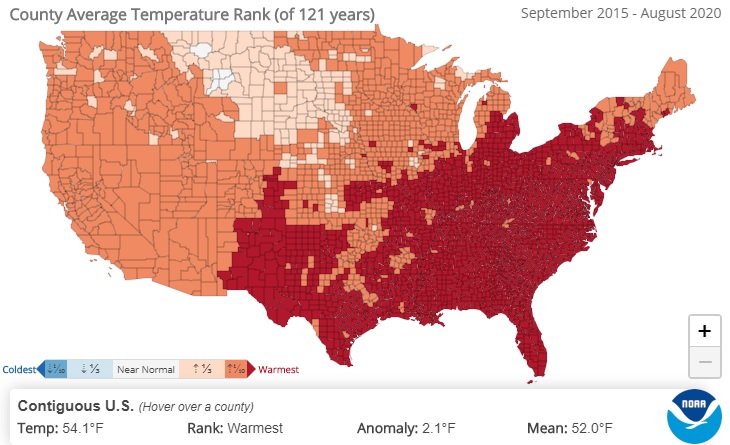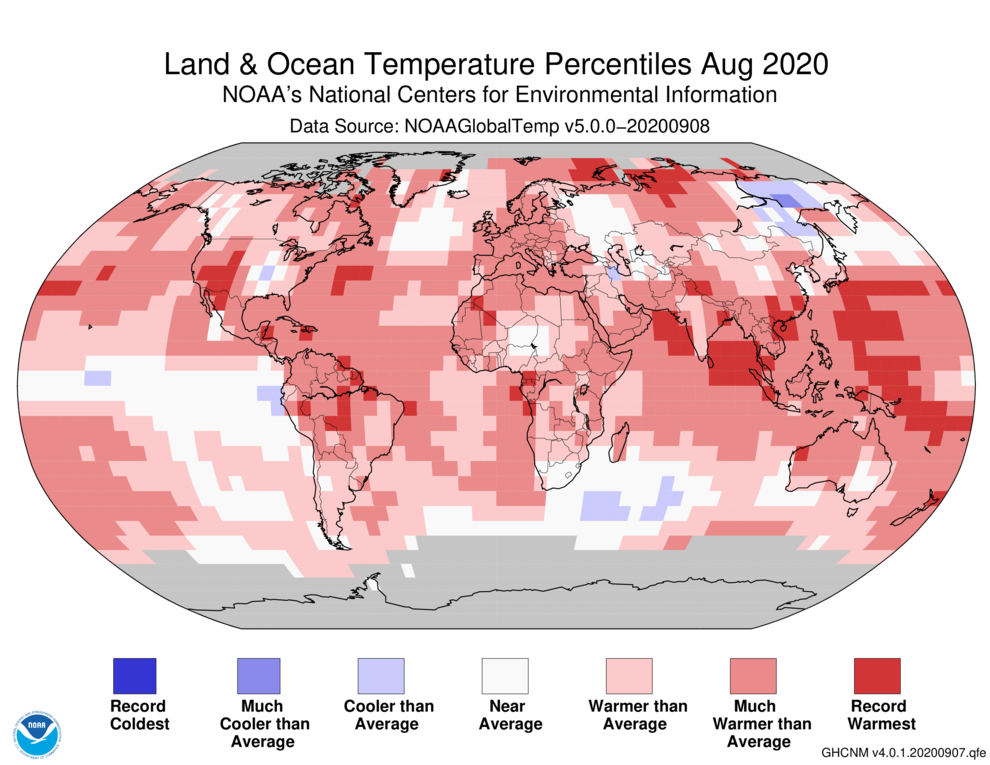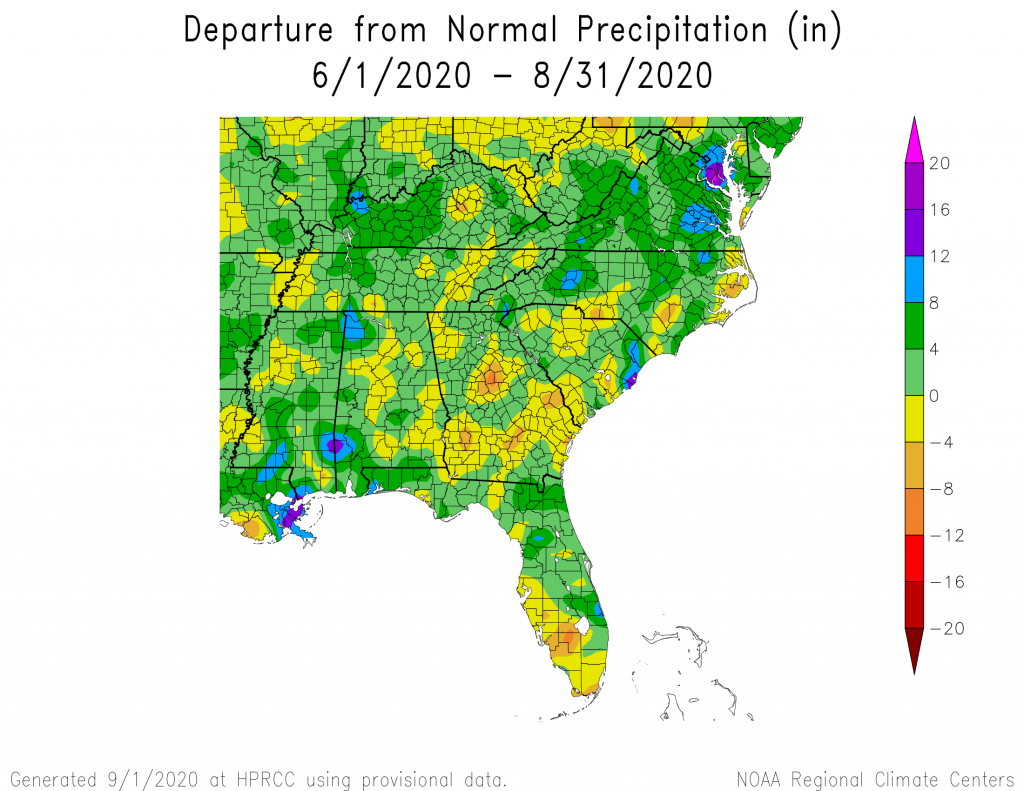Climate summaries
-

Another month has come and gone and so today we will look at the preliminary climate summary for September 2020. The maps from the High Plains Regional Climate Center show that average temperatures were near to slightly above normal across most of the region. If you break it down into maximum and minimum temperatures, you…
Posted in: Climate summaries -

Deke Arndt of the National Centers for Environmental Information posted a map today which shows the 5-year average temperature ranking by county (September 2015 to August 2020) for the continental US. It shows that for large parts of the country including most of the Southeast, this has been the warmest 5-year temperature since records began…
-

The latest global climate summary for August 2020 was released by NOAA earlier this week. It shows that this past August was warmer than 2019 but still not quite as warm as the warmest August, 2016, for the globe. For the June through August period, which is Northern Hemisphere summer, it was the third warmest…
Posted in: Climate summaries -

The latest seasonal climate summary for the Southeast for June through August 2020 is now available from the Southeast Regional Climate Center. You can view it at https://sercc.com/SoutheastRegionQuarterlyReportSummer2020.pdf.
Posted in: Climate summaries -

Two years ago today, Hurricane Florence made landfall in North Carolina. It was a very slow-moving storm and dropped a tremendous amount of rainfall on coastal North Carolina. The North Carolina Climate Office released a 2-year retrospective today which summarizes the storm, including the wind, surge and rainfall. You can read it at https://climate.ncsu.edu/climateblog?id=324&h=5666e5c1.
-

The latest monthly climate summary for the Southeast for August 2020 is now available from the Southeast Regional Climate Center. You can access it at https://sercc.com/SoutheastRegionMonthlyClimateReportAugust2020.pdf.
Posted in: Climate summaries -

UPDATE: View recording at https://www.youtube.com/watch?v=h7tGOXzE0II. Join us for the Southeast Climate Monthly Webinar! These webinars provide the region’s stakeholders and interested parties with timely information on current and developing climate conditions such as drought, floods, and tropical storms, as well as climatic events like El Niño and La Niña. Speakers may also discuss the impacts…